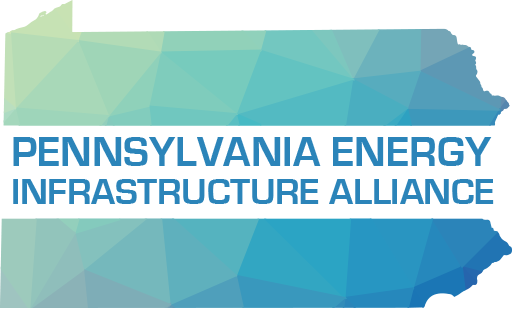Sen. Gene Yaw’s OpEd in The Morning Call speaks the truth about Pennsylvania’s energy infrastructure and why Governor Tom Wolf’s push for PA to join the Regional Greenhouse Gas Initiative (RGGI) is irrational. Sen. Yaw highlights the need for our energy resources to be a mix of both renewable and fossil fuel sources and that joining RGGI will have consequences for every ratepayer, business and industry in PA.
Full Text:
Your View by a state senator: Why we need fossil fuels as well as ’clean energy’
By GENE YAW, THE MORNING CALL | SEP 02, 2020
I recently read a commentary in the Sunbury Daily Item, “Threat of Fossil Fuels.” This is one of many pieces I have seen in which the authors cite the use of fossil fuels as a detriment to our environment.
These articles fail to reference clean coal technologies or the fact that as Pennsylvania’s natural gas power generation has increased 34 percent since 2005, greenhouse gas emissions across the state have dropped 39 percent. Our air is cleaner today than at any time since the dawn of the industrial revolution over 200 years ago.
America has led the world in reducing greenhouse gas emissions over that time period. These reductions are having a demonstrable impact on air quality, with Pennsylvania’s DEP forecasting fewer and fewer severe air quality alerts each year — a fact that Gov. Wolf neglects to tell the public as he pushes for Pennsylvania to join with New York, New Jersey and other states in the Regional Greenhouse Gas Initiative (RGGI).
This initiative would have drastic consequences for every ratepayer, business and industry in Pennsylvania. Unfortunately, most of the commentary is based on a superficial discussion of “clean” energy, which translates into a solution based on eliminating fossil fuels.
Anyone who thinks that windmills and solar panels miraculously appear on the mountainside clearly ignore and misunderstand the manufacturing process. A recent Wall Street Journal article said each windmill is composed of 900 tons of steel, 2,500 tons of concrete and 45 tons of nonrecyclable plastic. Five rare earth elements — dysprosium, terbium, europium, neodymium and yttrium — are used in magnets for wind turbines.
How are turbine blades recycled? They’re not. When considering environmental impact, remember we have no national or state policy regarding recycling or disposal of wind turbines at the end of their useful life.
For many homeowners, one of the primary motives for going solar is to have a positive impact on our environment, which is commendable. Yet solar panels harbor their share of toxic chemicals, including lead, cadmium telluride, copper indium selenide, polyvinyl fluoride, to name a few.
Aside from the harmful components, the majority of solar panels consist of glass, which often cannot be recycled because of the impurities. We do not have the knowledge nor facilities at the federal or state level to deal with recycling or disposal of solar panels.
In addition to wind and solar, electric car batteries pose greater challenges. Take, for example, a Tesla car battery, which weighs approximately 1,200 pounds and contains 7,104 lithium-ion battery cells, nickel, cobalt and more components. For a Tesla semi-truck, the average weight is estimated between 4.7 and 7.9 tons. What does this mean for our roads and transportation infrastructure if more people are buying and using electric vehicles?
Demand for cobalt, nickel, lithium, and graphite is projected to rise dramatically to meet demand for batteries. The majority of these materials is not produced in the United States but imported from around the world, often from weak countries like the Democratic Republic of Congo, in which the mining industry uses children as young as 6 years of age and other laborers in “artisanal mining.”
Nuclear energy is promoted as “clean” from an emissions perspective. That may be the end result, but what about the emissions associated with the manufacturing of millions of tons of concrete and steel needed to construct the facilities? And we cannot overlook that Pennsylvania is required to de facto house four nuclear waste sites because there is no common disposal site in the United States.
How can anyone realistically and rationally ignore the environmental impacts of the manufacturing and disposal issues associated with this industry, and just label it as “clean”?
The concept of looking at the big picture is simple. For every so-called “clean” energy process, whether it involves nuclear, wind, solar, hydroelectric or other, there is one common denominator — mining. Mining involves the use of heavy equipment, which is made from steel. Steel, in turn, is made from iron ore and coal, both of which are extracted from the earth by mining. And so the circle continues with each step having its own environmental impact and emissions.
The Regional Greenhouse Gas Initiative does not look at the whole picture and ignores the multitude of ramifications it generates and encourages, while focusing on the very limited point of emissions. Ignored are questions and considerations regarding: The increase in mining activity in the U.S. to provide the raw materials needed to produce “clean” energy; the effect of increased mining in Third World countries to support our “clean” energy goals, and are we going to accept being dependent on foreign governments and child labor for our “clean” energy materials?
While the goal of addressing climate change is desirable, targeting one part of our energy portfolio as proposed by RGGI is shortsighted. Every energy source has an environmental impact. Our energy mix needs to encompass all of our resources, which includes fossil fuels.
State Sen. Gene Yaw (R-Bradford) is chairman of the Senate Environmental Resources and Energy Committee.
